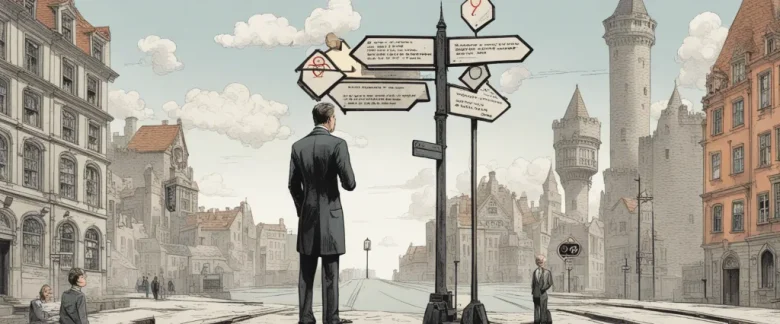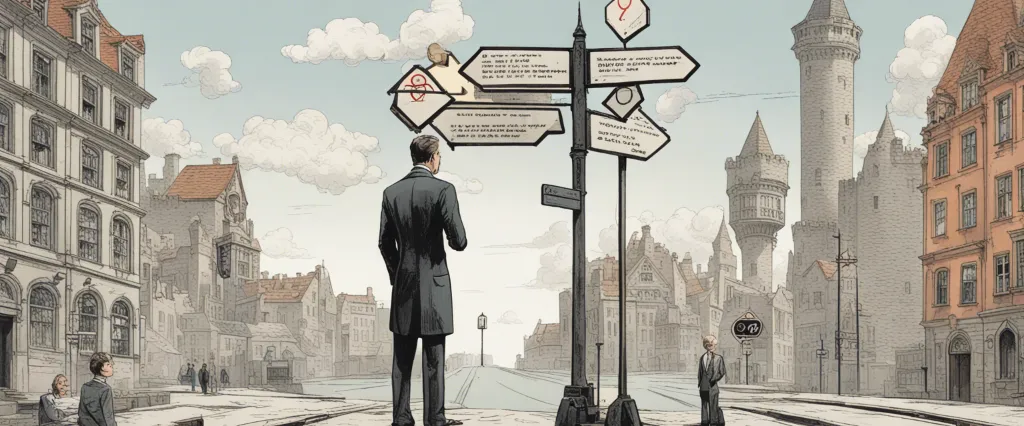Lost to the West: The Forgotten Byzantine Empire That Rescued Western Civilization” by Lars Mehrling Brownworth is a captivating historical exploration that sheds light on the often overlooked Byzantine Empire. In this gripping narrative, Brownworth introduces readers to a remarkable and resilient civilization that played a crucial role in preserving and disseminating the knowledge and culture of ancient Greece and Rome during the turbulent medieval period. By delving deep into the empire’s captivating history, Brownworth unravels the fascinating story of a forgotten empire and its pivotal contributions to the development of Western civilization.
Lars Mehrling Brownworth, a historian and former US history teacher, has devoted his career to unearthing forgotten corners of history and making them accessible to a wide audience. His passion for historical exploration is evident in his engaging writing style and meticulous research. With his strong narrative skills, Brownworth takes readers on a journey through time, enabling them to uncover the hidden contours of the Byzantine Empire and appreciate its significant impact on the world we know today. Combining his expertise with an insatiable curiosity, Brownworth brings the ancient world to life, making Lost to the West an enlightening and captivating read for history enthusiasts and novices alike.
Chapter 1: The Rise of Byzantium
Chapter 1: The Rise of Byzantium from the book “Lost to the West” by Lars Mehrling Brownworth provides a summary of the early history of Byzantium, from its establishment as a Greek colony to its emergence as a powerful empire.
The chapter begins by exploring the origins of Byzantium, which was founded by Greek settlers in the 7th century BC. Situated strategically on the Bosporus Strait, the city grew in importance due to its favorable location for trade and defense. The author emphasizes that Byzantium was influenced by both the Greek and Roman civilizations, adopting Greek culture and traditions while also embracing Roman administrative systems.
The book further delves into the events that led to the transformation of Byzantium into the Byzantine Empire. Under the reign of Constantine the Great, the city was renamed Constantinople and became the new capital of the Roman Empire in the 4th century. This marked a significant shift in power from Rome to the East.
Brownworth describes the challenges faced by the Byzantine Empire, including invasions from Germanic tribes and later from the Huns. He highlights Emperor Justinian’s efforts to regain lost territory and expand the empire’s influence. Justinian’s reign, known for his codification of Roman law and the construction of the Hagia Sophia, is portrayed as a period of both prosperity and conflict.
In conclusion, Chapter 1 provides an overview of the rise of Byzantium from its humble beginnings as a Greek colony to its transformation into a powerful empire. It highlights the city’s strategic location, its absorption of Greek and Roman influences, and the challenges faced by the Byzantine Empire throughout its early history.
Chapter 2: Justinian the Great
Chapter 2 of “Lost to the West” by Lars Brownworth provides a summary of the life and reign of Emperor Justinian I, also known as Justinian the Great. Justinian was born in the year 482 in Tauresium, Illyria (modern-day North Macedonia), to a peasant family. Despite his humble background, Justinian showed exceptional intelligence and dedication to his studies, which eventually led him to becoming the emperor of the Byzantine Empire.
As emperor, Justinian aimed to restore the glory of the Roman Empire. He was a visionary leader who believed in the concept of a unified Christian state and sought to exploit every opportunity to regain the lost territories. Justinian’s rule was characterized by his ambitious construction projects, most notably the reconstruction of the Hagia Sophia, a grand church in Constantinople.
Justinian also pursued military conquests, seeking to reclaim former Roman territories in the Western Mediterranean, North Africa, and Italy. Under the leadership of his talented general, Belisarius, the Byzantine forces managed to reclaim significant portions of the Western Roman Empire, including Naples, Rome, and parts of Spain.
Despite initial successes, Justinian’s ambitions were eventually hindered by numerous challenges. The empire faced financial difficulties due to heavy taxation, and outbreaks of the bubonic plague further weakened the state’s infrastructure and population. Additionally, the empire faced ongoing military threats from barbarian tribes and the Sassanian Empire in the East.
Nevertheless, Justinian’s reign left a lasting impact on the Byzantine Empire. His legal reforms, compiled in the Corpus Juris Civilis, formed the foundation of later Byzantine law and influenced legal systems throughout Europe. Justinian’s rule also saw the preservation of Roman culture and the promotion of Byzantine art and architecture.
Overall, Chapter 2 of “Lost to the West” portrays Justinian the Great as an ambitious leader who sought to reunite the Roman Empire and restore its former glory. Despite facing numerous challenges, his reign left a significant mark on Byzantine history and influenced the development of Western civilization.
Chapter 3: The Iconoclast Controversy
Chapter 3: The Iconoclast Controversy of the book Lost to the West by Lars Mehrling Brownworth explores a significant historical event during the Byzantine Empire known as the Iconoclast Controversy. This controversy arose in the 8th and 9th centuries and revolved around the use and veneration of religious icons.
The chapter begins by providing a background on the Byzantine Empire, its rich cultural heritage, and the significance of icons within its society. Icons, religious images used for worship and devotion, were an integral part of Byzantine religious practices. However, in the 8th century, Emperor Leo III controversially proclaimed that icons should be removed from churches, as he believed their use bordered on idolatry and went against religious purity.
This proclamation sparked a fierce debate that engulfed the empire. The controversy divided Byzantine society, with supporters of icon veneration known as “Iconodules” opposing the emperor’s decision, while those who agreed with Leo III became known as “Iconoclasts.” The chapter delves into the theological arguments put forward by both sides, with Iconodules arguing that icons were essential for invoking divine presence during worship, while Iconoclasts contended that they violated the Second Commandment.
Brownworth provides an in-depth analysis of the political and religious struggles that ensued during this period. He discusses the impact of various emperors’ support or opposition to icon veneration, such as the enthusiastic iconodule Empress Irene and the staunch iconoclast Emperor Constantine V. The political climate and power struggles within the empire significantly influenced the outcome of the controversy.
Overall, Chapter 3 of Lost to the West offers an exploration of the Iconoclast Controversy, highlighting the deeply rooted tensions within Byzantine society and the conflicting religious ideologies surrounding the use of icons. The controversy would ultimately shape the course of Byzantine history and have long-lasting effects on the development of Christianity.
Chapter 4: The Byzantine Golden Age

Chapter 4 of “Lost to the West” by Lars Mehrling Brownworth focuses on the Byzantine Golden Age, an era of prosperity and cultural advancement that spanned from the 9th to the 12th century. This chapter begins by introducing the Macedonian dynasty, which marked the revival of the Byzantine Empire after a period of decline.
The author highlights the reign of Emperor Basil I, who implemented several significant reforms that improved the empire’s military and administrative structures. Basil’s accomplishments paved the way for his son, Leo VI, who continued to strengthen Byzantium’s power through innovative legislation and diplomatic relationships. Moreover, Leo VI’s writings and his renowned work, the “Tactica,” provided valuable insights into Byzantine military strategies.
The chapter then shifts its focus to the Byzantine intellectual renaissance under the Macedonian dynasty. The author explores the achievements of scholars and scientists during this period, such as the creation of the University of Constantinople and the preservation of ancient texts. The influential Byzantine scholars Photios and Michael Psellus are also discussed, along with their contributions to philosophy, theology, and education.
Brownworth further highlights the expansion of Byzantine trade and the empire’s ability to maintain a global economy, with Constantinople acting as a major hub for merchants from around the world. The author emphasizes the significance of Byzantium’s wealth and how it influenced the empire’s cultural development, leading to the construction of magnificent churches and grand architectural projects.
In summary, Chapter 4 of “Lost to the West” describes the Byzantine Golden Age, highlighting the achievements and advancements made under the Macedonian dynasty. The chapter explores the reform-minded rulers, the intellectual and artistic renaissance, and the flourishing trade that contributed to Byzantium’s prosperity during this period.
Chapter 5: The Byzantine-Islamic Rivalry
Chapter 5 of “Lost to the West” by Lars Brownworth delves into the historical period of the Byzantine-Islamic rivalry. This chapter primarily focuses on the rise of Islam and its impact on the Byzantine Empire.
The chapter begins by introducing the seventh-century Arab conquests, which saw the rapid expansion of the Islamic empire. The Arabs, unified under the creed of Islam, launched military campaigns that threatened the Byzantine Empire. The Byzantines, led by Emperor Heraclius, fought fiercely to protect their territory but eventually suffered significant losses.
The Arab forces conquered Syria, Egypt, and Palestine, leaving the Byzantines weakened and vulnerable. However, the Byzantine Empire managed to survive thanks to the organized defenses of Constantinople, as well as internal divisions within the Islamic empire.
Brownworth explores the challenges faced by the Byzantines in the face of this Islamic expansion. He presents a vivid picture of the conflict, contrasting the Arab desert warriors with the Byzantine army’s well-trained soldiers, highlighting the differences in their military tactics and equipment.
Additionally, the chapter examines the ongoing religious rivalry between Christian Byzantium and the Islamic world. With Islam’s rapid spread came a competing ideology that appealed to many populations within the empire. This posed a significant challenge to the Byzantine Church’s authority and influence.
Overall, Chapter 5 provides an in-depth analysis of the Byzantine-Islamic rivalry during this tumultuous period. It highlights the military clashes, the territorial losses suffered by the Byzantines, and the impact of Islam on both the military strength and religious fabric of the Byzantine Empire.
Chapter 6: The Crusades and the Fourth Crusade
Chapter 6 of “Lost to the West” by Lars Mehrling Brownworth focuses on the Crusades and specifically delves into the events surrounding the Fourth Crusade.
The chapter begins by providing background information on the motivations behind the Crusades. In the 11th century, the Byzantine Empire was under constant threat from Muslim forces, which inspired Pope Urban II to call for a Holy War, seeking to reclaim Jerusalem and other Holy Land territories from Muslim control.
Brownworth then introduces the Fourth Crusade, which deviated significantly from its original purpose. Instead of targeting Muslim-controlled territories, the Crusaders diverted their attention towards Constantinople, the capital of the Byzantine Empire. The diversion was largely due to political maneuvering and manipulation by a Venetian contingent within the Crusader army, looking for their own financial gain.
The Crusaders, faced with mounting debts to the Venetians, agreed to attack Constantinople and assist a claimant to the Byzantine throne. This decision marked a turning point in Crusader history, as they aimed to overthrow fellow Christians and pillage one of Christianity’s most prominent cities.
The chapter describes the shocking consequences of the Fourth Crusade, where Constantinople suffered tremendous destruction, including looting, violence, and the desecration of religious sites. The Byzantine Empire never fully recovered from this catastrophic event, and it led to increased hostility between the Eastern and Western churches, ultimately contributing to the permanent schism between Roman Catholicism and Eastern Orthodoxy.
In summary, Chapter 6 of “Lost to the West” explores the motivations behind the Crusades and provides a detailed account of the Fourth Crusade’s deviation from its original objectives. The disastrous consequences of the Crusaders’ diversion to Constantinople had long-lasting effects on the Byzantine Empire and the relationship between Eastern and Western Christianity.
Chapter 7: Decline and Fall
Chapter 7 of “Lost to the West: The Forgotten Byzantine Empire That Rescued Western Civilization” by Lars Brownworth focuses on the decline and fall of the Byzantine Empire, which marked the end of an era for this influential civilization.
The chapter begins by delving into the political and military challenges faced by Emperor Heraclius during the 7th century. The Byzantine Empire was under severe pressure from various external threats, including the Sassanian Empire and the emerging Islamic Caliphate. Heraclius attempted to repel these forces, but ultimately failed, leading to significant territorial losses and a weakened empire.
Brownworth highlights the destructive impact of the Arab invasions on Byzantine territories, as the Arab forces were highly aggressive, motivated, and willing to adapt strategies effectively. The Byzantines, on the other hand, suffered from internal conflicts and corruption that hindered their ability to effectively respond to the enemy.
The chapter also discusses the key battle of Yarmouk in 636 AD, which marked a turning point in the Muslim conquests. The Byzantine army was decisively defeated, losing control of Palestine and Syria. This defeat severely undermined Byzantine morale and weakened their prestige throughout the region.
Furthermore, the chapter sheds light on the tensions between Heraclius and the religious communities within his empire. The rise of Islam prompted discussions among Christians about their faith and doctrine. Heraclius attempted to intervene in these discussions, which resulted in divisions within his own empire and weakened the unity of the Byzantine state.
In conclusion, Chapter 7 narrates the decline and fall of the Byzantine Empire, primarily due to the external pressures of Arab invasions and internal conflicts. These factors combined to weaken the empire’s military, political, and religious authority, ultimately leading to its downfall.

Chapter 8: Byzantine Legacy
Chapter 8 of “Lost to the West” by Lars Mehrling Brownworth delves into the Byzantine legacy, exploring the influence of the Eastern Roman Empire on the world, particularly Europe, following its fall. Brownworth highlights the empire’s enduring impact in the areas of architecture, education, religion, bureaucracy, and military strategy.
The chapter begins by discussing how Byzantine architecture served as the cornerstone for various European structures, with examples such as Hagia Sophia inspiring the design of many churches and cathedrals. This architectural influence continues to shape the aesthetic of cities like Venice and Istanbul.
Education is another crucial aspect of Byzantine legacy. The empire’s focus on literacy and learning produced scholars who preserved ancient Greek and Roman texts, as well as made original contributions to various fields. These scholars played a pivotal role in the transmission of knowledge to the Islamic world and Western Europe, creating a bridge between both civilizations.
Religion is explored next, as the Byzantine Empire played a significant role in shaping the development of Christianity. The debates and schisms that occurred within the empire significantly impacted the evolution of Christianity in Europe, with the East-West Schism of 1054 being a prominent example.
The Byzantine bureaucratic system is also credited as the precursor to modern administrative structures. The empire established a complex system of governance, utilizing a vast network of civil servants, tax collectors, and spies, which laid the foundation for the bureaucracies of later states.
Lastly, the chapter examines the Byzantine military strategy, which incorporated innovative tactics and technologies. The Byzantine Empire’s resilient army, which relied on heavy infantry, archers, and cavalry, influenced military thinking throughout Europe, particularly during the Crusades.
In conclusion, Chapter 8 of “Lost to the West” emphasizes the profound and lasting influence of the Byzantine Empire on various aspects of European civilization. The empire’s architectural, educational, religious, bureaucratic, and military legacies continue to shape our world today, leaving an indelible mark on history.
After Reading
In conclusion, “Lost to the West” by Lars Mehrling Brownworth provides a fascinating and encompassing account of the Byzantine Empire’s history and its significant contributions to Western civilization. The author’s meticulous research and engaging storytelling skillfully bring to life a forgotten era, highlighting the empire’s political struggles, religious conflicts, and cultural achievements. By shedding light on the Byzantines’ crucial role in preserving and transmitting classical knowledge, defending Europe from invading forces, and shaping the development of Christianity, the book reminds readers of the empire’s profound impact on the wider world. Overall, “Lost to the West” is an enlightening and captivating read for history enthusiasts seeking to uncover the exceptional legacy of the Byzantine Empire.
1. Constantinople: The Last Great Siege, 1453” by Roger Crowley – This gripping historical account delves into the final days of Constantinople, now modern-day Istanbul, and the epic siege that ultimately led to its fall to the Ottoman Turks. With meticulous research and vivid storytelling, Crowley brings this significant event in world history to life.
2. “The Ottoman Empire: A Short History” by Suraiya N. Faroqhi – For readers interested in exploring the history of the formidable empire that conquered Constantinople, this concise yet comprehensive book provides an overview of the Ottoman Empire’s rise, expansion, and eventual decline. Faroqhi skilfully engages readers with readable prose and insightful analysis.
3. “Byzantium: The Surprising Life of a Medieval Empire” by Judith Herrin – Dive deeper into the Byzantine Empire’s rich history with this fascinating book by Judith Herrin. Drawing on archaeological findings, textual evidence, and cultural analysis, Herrin paints a vibrant portrait of the Byzantine Empire, highlighting its influence on European civilization.
4. “The Crusades: A History” by Jonathan Riley-Smith – As one of the most enduring conflicts of the medieval period, the Crusades offer a fascinating perspective on the intricacies of religious and political struggles. Riley-Smith’s comprehensive account provides a nuanced understanding of the Crusades, exploring the motivations, key players, and lasting impact of these holy wars.
5. The Silk Roads: A New History of the World” by Peter Frankopan – For a broader perspective on medieval history and the interconnectedness of different civilizations, Frankopan’s book offers an in-depth examination of the Silk Roads, the ancient trade routes that facilitated cultural exchange between East and West. This captivating narrative sheds light on the historical significance of the Byzantine Empire and its pivotal role in connecting diverse societies.



